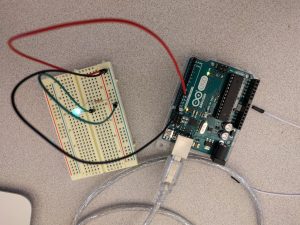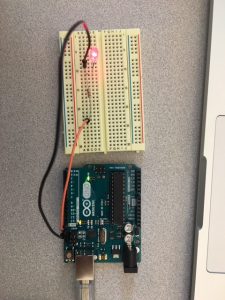Description:
I used an Arduino-Uno as a microprocessor to light an LED light at a decelerating pace.
Components Used:
- 1 Arduino
- 1 LED
- 1 Resistor (220Ω)
- 1 Breadboard
Code:
/*
* Blink
*
*/
int ledPin = 13;
int stepFunction(int x, int y){
//the rate at which the LED will decelerate.
int result;
result = x + y;
return result;
}
int pace = 0;
void setup() {
// put your setup code here, to run once:
pinMode(ledPin, OUTPUT);
Serial.begin(9600);
}
void loop() {
// set the running pace for the LED blinking
int increment = 20; // first, set increment to 20ms.
digitalWrite(ledPin, HIGH); // turn the LED on (HIGH is the voltage level)
pace = stepFunction(pace, increment);
Serial.println(increment);
delay(pace);
// delay(2000); // wait for a second
digitalWrite(ledPin, LOW); // turn the LED off by making the voltage LOW
delay(pace);
// delay(1000); // wait for a second
increment = pace;
}






